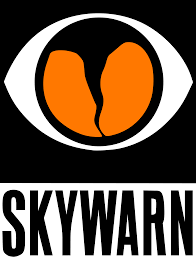QRP And Amateur Radio
- Details
While many operators tend to operate using the 100W or 200W their radio provides, and yet others use external amplifiers to run hundreds, even more than 1KW, there are others who operate at the other end of the spectrum, 5-10 Watts.
QRP operation is often practiced by operators participating in Parks On The Air (POTA) or Summits On The Air (SOTA), who are often hiking or backpacking their equipment to the operating location, carrying their power source with them. Naturally, packing a Marine Battery would be a bit of a challenge, so smaller and lighter batteries with lower power capacity are used.
Due to limitations in available power the operators naturally run less power, usually 20W or less. QRP is generally considered 5-10W, but even 20W is possible with more efficient modern equipment and Lithium batteries.
In order to get the most bang for their buck these low power (QRP) operators must be as efficient as possible, running short coax runs and antennas that are well matched for the bands they will operate on. In many cases, because of the efficiency of their equipment, more power is radiated from their antenna than an operator pushing 100W into a less efficient "multi-band" antenna.
The experience gained from operating QRP is very applicable for use in emergency situations, as people in the disaster area may find themselves operating off of battery or other low-power sources.
A recent Near Vertical Incident Skywave (NVIS) test demonstrated how well QRP can work, as stations both nearby and over 150 miles away were able to communicate with every QRP station participating in our test!
Our next NVIS experiment will most definitely include a QRP component to measure our ability to communicate in emergency situations where commercial power may not be available.
Prowords
- Details
Like the use of standard phonetics, the use of standard Procedure Words (usually referred to as PROWORDS) helps to ensure the clear conveyance of information between radio operators.
Like phonetics, there is a standard set of prowords used in communications, increasing the probability of understanding even when hearing only a part of the proword during noisy conditions.
Some prowords are more commonly used than others, and some prowords, while more expedient, can be a little confusing because they aren't commonly used in Amateur Radio.
Here are some of the most common prowords you'll hear on formal nets, especially when passing formal traffic:
Wilderness Protocol and LiTZ
- Details
The Wilderness Protocol, like many Amateur Radio practices, is not part of FCC regulations or law, merely a generally agreed upon practice. The purpose of the protocol is to provide a way for operators outside of repeater range and in need of assistance to make contact with other operators to request assistance.
Although it could, and should, be practiced under any conditions, it was originally designed as a tool for hikers, campers, and those who work in wilderness areas.
Operators, especially those in wilderness areas, would monitor calling frequencies on various bands (146.52 MHz, 52.525, 223.5, 446.0 and 1294.5 MHz) at the top of the hour. Ideally listeners would monitor from a few minutes before
Vanity Call Signs
- Details
Amateur radio operators are issued call signs by the FCC upon qualifying for their Technician license, and have the option to be issued new call signs that reflect their new class when they upgrade to General or Extra. The form of call sign is limited by license class, where higher class of licenses allow simpler/smaller call signs. For instance, a Technician class licensee may be issued something like KX4XTT (often referred to as a two by three, two letters before the number and three after); however an Extra class licensee may have a call sign like W4BK (often referred to as a one by two). There are various call sign formats between these extremes, often limited by license class. You can view the "rules" by going to this link and clicking on "Sequential Call Sign System".
A person with a General, Advanced, or Extra license may have a Technician class call sign, but not the other way around. Most people, when upgrading their license, choose to keep their original call sign, and the rules allow for it. Others may request a new call sign be issued, but most prefer to choose their call sign if they are going to change it, which is where the Vanity Call Sign system comes into play.
Handheld Radios As Go-Kit
- Details
The most basic “go-kit” item in the Amateur Radio Operator's bag of tricks is the Handheld Transceiver (HT). No, HT doesn't stand for handy-talky. While most of us own several HTs, and they are useful tools, especially when near repeaters, we also know that the HT, out of the box, makes for a pretty poor emergency station. The rubber-ducky antenna and lower voltage batteries often supplied with the radios, along with the lower power output HTs have are challenges to be overcome.
Let's take a look at some things that can improve HT performance:
- Purchase a higher gain antenna for the HT. The original manufacturers equipment (OEM) antenna that came with your HT is little more than a dummy load. Many aftermarket antenna manufacturers make replacement antennas for just about every HT. Talk to others with the same HT as yours and find out what they are using. A step up from that is a mobile antenna or even a base station antenna on a push-up pole. Antenna gain and height are the keys to overcoming marginal operations.
Page 1 of 12




